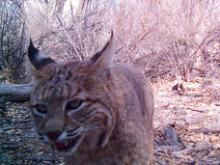Their legends have intrigued us, even terrified us for years. Stories of blood sucking creatures that haunt our villages, stalk our city streets, and steal away the unsuspecting in the middle of the night to satisfy their blood lust. But, how much of these stories are true? How much is simply demonizing what we do not understand and is it possible that there are actually vampires among us?
The Living Human Vampire:
One thing is certain, there are those among us who identify themselves as vampires who are known as Living Human Vampires but unlike the ravenous, blood thirsty monsters that the media depicts them as, Vampires are very much like most of the people you know. They could be your neighbors, teachers, doctors, professors, or co-workers who are just living out their lives in peace, and often unknown to the rest of the world.
So what is a “Living Human Vampire”?
Real vampires, which sometimes use the spelling vampyre to distinguish themselves from their more legendary counter parts, are simply people who draw energy from others in one form or another. Without acquiring this energy, Vampires can feel run down, have poor appetites, and have reported to suffer from other physical and spiritual problems.
Blood Drinkers:
For Sanguine vampires, this energy is taken in the form of blood which they obtain from carefully tested and willing donors. The bloodletting is a safe, almost sacred, practice between consenting adults quite unlike the image of monsters stalking the night or depressed emo kids sitting around cutting themselves. Such stereotypes are merely the product of biased and uneducated writers who do not understand or take the time to research the Vampire Community. Donors are willing, consenting adults who are treated with respect for the vital life that they are sharing with a Vampire.
Why Do They Drink Blood?
Vampires require larger amounts of vital energy than other humans, they supplement this lack of energy by drawing it out of the blood that they consume. While we often see some writers who attack the Vampire Community with claims that this is just a fetish, a fantasy, or even a mental disorder, the fact is that Vampires are simply refueling their life's vital energy from other sources much in the same way others will crave red meat when their iron is low. While this may seem like a bizarre, even taboo practice to some, the American practice (almost obsession) of the consumption of beef and pork is also a very bizarre and taboo issue to many other cultures including Hindus and vegetarians. And whether most people realize it or not, they to are consuming blood every time they order a rare steak.
Not All Vampires Drink Blood:
There are also Vampires who do not consume blood. Psychic or Elemental Vampires feed upon energy directly by pulling it from humans or other living beings and sources in nature. Much like the succubus of legend, it is this vital energy, referred to as Ch'i (Qui), Ki, or Prana in various Asian cultures, that a Vampire is feeding on; therefore, their donors are not in an danger of being killed in order to feed a Vampire like many movies may portray.
The Vampire Community:
Vampires come from various religions, backgrounds, etc. Some are Sanguine Vampires, some are Psychic Vampires, and of course you also have those who are supporters of Vampires or those referred to as Lifestylers who identify with the figure of the noble Vampire as their central archetype but regardless of their specific path or origin they all come together to form a larger, multi-faceted community. The Vampire Community has been growing, evolving over the past few decades and today can offer a wealth of information from community web sites, Houses, books, and events that help both those within the community and those from without to better understand what exactly real Vampires are.
Some, like those in the Gothic and Vampire Alliance, are forming small, grassroots organizations to reach out to the mainstream in an attempts to educate the public on the facts and dispel the myths about the Community and to fight for the rights of Vampires and their Gothic cousins. While many members of the Vampire Community still prefer to live in the shadows, with good reason, many others are emerging to speak up for the community that they hold so dear. Vampires can be artists, scholars, bus drivers, even writers, so the next time you are taking the bus, watching a movie, taking a walk on campus, or reading an article....ask yourself if there is a vampire near by? The answer may surprise you.









